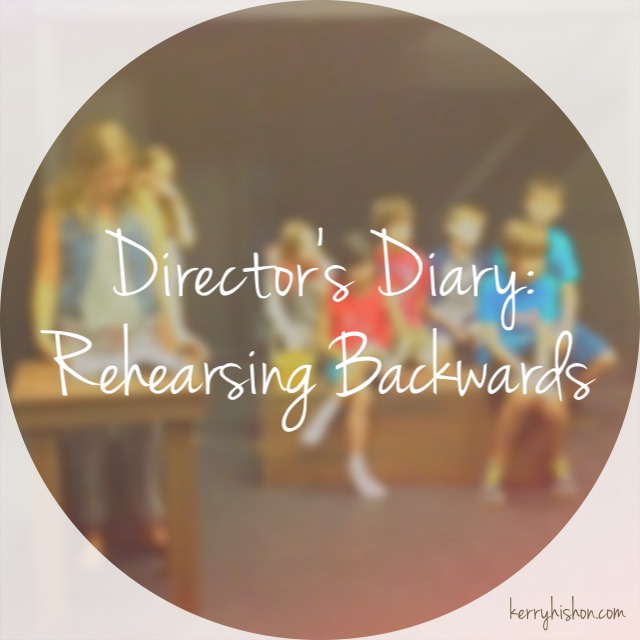
It’s a frequent occurrence when rehearsing a show that we practice running the show from the beginning of the show to the end. This seems fairly obvious, since that’s the way shows tend to be presented (yes, The Last Five Years counts as being presented from beginning to end — don’t get me started), even those shows with multiple endings or audience participation “choose your own adventure” shows. Yet it’s fairly common to stop mid-way through a scene to “fix” something, or take time in between acts to give notes, and then run out of rehearsal time and not be finished running the show. “Oh well,” we tell ourselves, “We’ll just pick up where we left off at the next rehearsal.” Sometimes we do… and sometimes we don’t.
Actors (generally young, beginning actors) also frequently practice their lines by reading and reviewing from the start of the script to the end. Seems pretty natural — it’s how we read books. But… raise your hand if you’ve ever gotten bored/hungry/tired/distracted during script review and stopped reviewing your lines. (Everyone should have their hands raised at this point.)
Which means that the lines at the start of the show tend to be really strong, and by the end they are… well, meh.
So, directors, how do we avoid the “second act slump”?
Try mixing it up and rehearsing backwards!
This is a fun technique suggested to me by my friend Ceris. We used this technique in a recent Big Bad Musical rehearsal to great success!
No, it doesn’t mean saying the lines in reverse; that’s just silly! (Though I won’t knock it until I try it… someone try it and tell me how it goes.)
What I mean is at your next rehearsal, take your show and start at the last scene or beat*, and run that scene until the end of the show. Then, go back to the second last scene or beat, and run that section until the end of the show. Then, go back to the third last scene or beat, and run that section until the end of the show. Repeat until you run out of rehearsal time or your actors go crazy from repetition.
This is useful for a number of reasons! It will keep the actors’ brains focused by keeping them on their toes, and ensures that they know their cues. It’s also good for drilling lines, music and choreography. It’s also useful for giving notes after a smaller chunk of scene work and then being able to apply it right then and there. And when all else fails, it mixes up the regular rehearsal scheme and is good for a laugh!
What are some techniques you use to mix up rehearsal? Tell me all about it!
Share your ideas with me on Facebook, Twitter, or in the comments below!
Want to read more fun stuff like this?
Click here to get updates from me and
exclusive surprises, straight to your inbox!
* Beats are divisions in the play by subject/topic/emotion, or when a character enters/exits. Beats are good for dividing long scenes up into smaller chunks.
